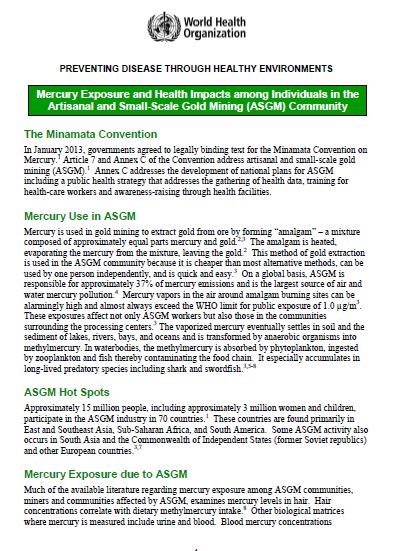Mercury Exposure and Health Impacts among Individuals in the Artisanal and Small-Scale Gold Mining (ASGM) Community
PREVENTING DISEASE THROUGH HEALTHY ENVIRONMENTS

Overview
Mercury is used in gold mining to extract gold from ore by forming “amalgam” – a mixture composed of approximately equal parts mercury and gold. The amalgam is heated, evaporating the mercury from the mixture, leaving the gold. This method of gold extraction is used in the ASGM community because it is cheaper than most alternative methods, can be used by one person independently, and is quick and easy. On a global basis, ASGM is responsible for approximately 37% of mercury emissions and is the largest source of air and water mercury pollution.4 Mercury vapors in the air around amalgam burning sites can be alarmingly high and almost always exceed the WHO limit for public exposure of 1.0 µg/m3 . These exposures affect not only ASGM workers but also those in the communities surrounding the processing centers. The vaporized mercury eventually settles in soil and the sediment of lakes, rivers, bays, and oceans and is transformed by anaerobic organisms into methylmercury. In waterbodies, the methylmercury is absorbed by phytoplankton, ingested by zooplankton and fish thereby contaminating the food chain. It especially accumulates in long-lived predatory species including shark and swordfish.
